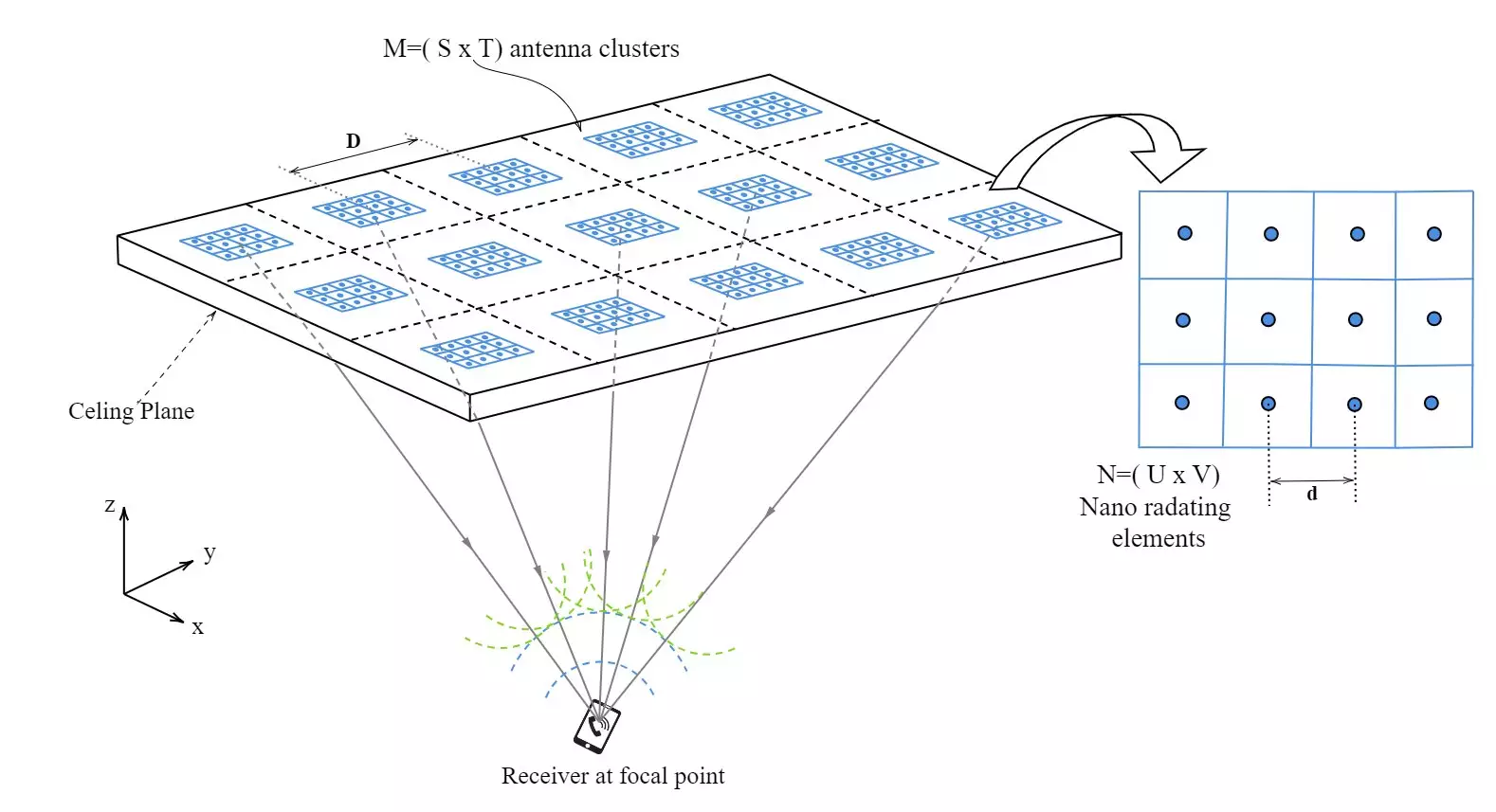As the world transitions into an increasingly digital era, the demand for faster and more reliable communication technologies has never been more pressing. Traditional indoor wireless communication systems, primarily based on radio frequency (RF) methodologies such as Wi-Fi and Bluetooth, face mounting challenges. These challenges include limited bandwidth, escalating signal congestion, and the complexities of environmental interference. In response to these growing demands, a promising alternative technology, Optical Wireless Communication (OWC), is emerging to potentially redefine connectivity standards.
OWC utilizes light, particularly infrared (IR) signals, to transmit data. This shift from radio waves to optical frequencies opens up a wider bandwidth, enabling higher data rates and reduced interference, which are essential for handling the increasing volume of data traffic in urban and densely populated settings. The principles behind OWC, particularly those of phased array configurations, leverage the power of light in ways previously unattainable with conventional RF systems.
Recent research published in the IEEE Journal of Lightwave Technology introduces groundbreaking advancements in OWC. By applying a unique concept dubbed the “phased array within a phased array,” researchers harness the complexities of quantum mechanics to improve communication reliability. This novel configuration simulates the quantum superposition principle, where multiple states can exist simultaneously. In this case, individual optical antennas are arranged within larger arrays, allowing for remarkable precision in manipulating and enhancing the transmitted signals.
This methodological leap, emphasizing redundancy and collective functionality, addresses significant challenges observed in traditional systems. Relying on a single transmitter can lead to vulnerabilities, such as susceptibility to obstacles. The phased array model, with its multiple clusters of transmitters, mitigates these risks, ensuring persistent communication clarity even in intricately designed environments.
One of the most distinctive features of this new OWC system is the dual transmission wavelengths employed. By optimizing the focus and stability of the signals transmitted, the system achieves superior accuracy in beam formation. This innovative approach reduces the likelihood of signal degradation, even with wider spacing between the transmitting clusters.
Moreover, the strategic deployment of multiple clusters introduces massive potential for operational enhancement, providing stable connectivity across varied applications. The synergy created through these arrays operates similarly to overlapping quantum states that reinforce each other, forming a robust communication infrastructure capable of sustaining high-speed connections.
In an era where energy conservation and sustainability are paramount, the research team’s focus on energy efficiency marks a significant step forward. Leveraging an Ant Colony Optimization (ACO) algorithm, the system intelligently activates only those clusters required for current communication tasks, resembling ants optimizing their foraging paths. This selective activation not only decreases overall energy consumption but also reduces operational costs and the ecological footprint of wireless systems, representing a crucial transition towards greener technologies.
Traditional wireless networks often operate at full capacity, leading to inefficiencies and significant energy waste. The ACO approach champions a smarter, more economical use of resources, making it a valuable asset as we progress toward stricter environmental standards and sustainability objectives.
The applications of this revolutionary OWC technology are extensive, with implications ranging from healthcare environments—where uninterrupted and secure communication is critical—to commercial and industrial spaces that rely on stable connectivity for operational efficiency. As this technology advances, it offers unprecedented opportunities for industry innovation, streamlining processes and enhancing communication frameworks in diverse fields.
Importantly, the phased array principles developed are not confined solely to infrared wavelengths. Their versatility allows for potential adaptations across various wavelengths, paving the way for future expansions in telecommunications technology.
The development of Optical Wireless Communication systems represents a landmark shift in the realm of wireless connectivity. By integrating sophisticated technologies and methodologies, especially within the parameters of energy efficiency and versatility, researchers are not merely enhancing speed and performance; they are fundamentally reshaping how we connect and communicate in our increasingly interconnected world. As advancements continue, it is pivotal to consider the wide-reaching benefits of such innovations, heralding a new epoch of efficient, sustainable, and robust communication networks. This is just the beginning of a transformative journey towards the future of connectivity.


Leave a Reply